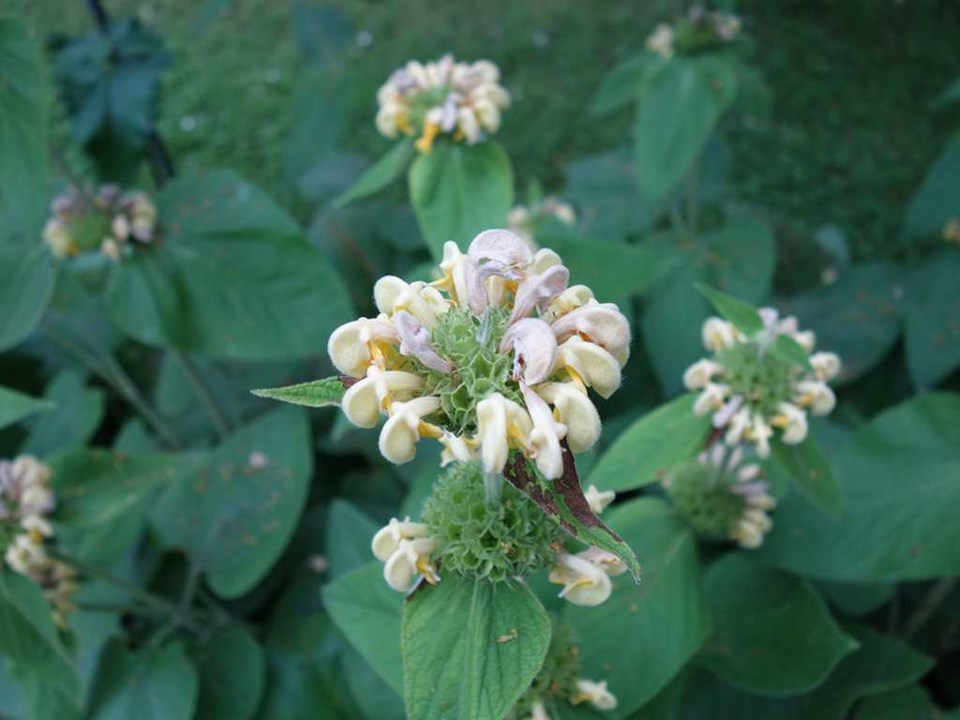Turkish sage (Phlomis russeliana)
turkish sage
Phlomis russeliana, commonly called Turkish sage or Jerusalem sage, is an upright herbaceous perennial of the mint family that is native to open woods and clearings in Turkey and Syria. It typically grows to 3′ tall and to 2′ wide. Bold, rough-textured, aromatic, broad-ovate, sage-like, gray-green basal leaves (to 6-8″ long) with cordate bases grow to 15″ tall. Tiny, tubular, hooded, 2-lipped, pale yellow flowers in whorled clusters bloom from July to September at intervals along columnar 4-angled flowering stems which rise well above the basal foliage to 2-3′ tall. Flower clusters give way in late summer to ornamental seed heads which remain attractive throughout fall into winter. Flowers are attractive as cut flowers or for dry arrangements.
Genus name comes from the Greek name phlomis for some plant possibly not of this genus.
Specific epithet honors John Russell (1766-1839). He was the 6th Duke of Bedford (England) and a zealous promoter or botany, gardening, forestry and agriculture.

Easily grown in organically rich, fertile, dry to medium moisture, well-drained soils in full sun. Tolerates light shade. Prefers sandy soils with excellent drainage. Plants tolerate dry soil conditions in cool summer climates, but generally appreciate some regular moisture in hot summer climates. Avoid wet soils. Plants spread quickly by rhizomes, without being invasive, to form a weed-suppressing ground cover.
| Hardiness zone | 5 - 9 |
| Sun light | Full sun |
| Water | Dry to medium |
| Maintenance | Low |
No serious insect or disease problems.
Although somewhat coarse, it is an excellent vertical flowering plant for dry sunny areas. Borders. Meadows. Cottage gardens. Wild gardens.
| Common name | turkish sage |
| Botanical name | Phlomis russeliana |
| Plant type | Herbaceous perennial |
| Family | Lamiaceae |
| Hardiness zone | 5 - 9 |
| Water | Dry to medium |
| Maintenance | Low |
| Flower color | Pale yellow |
| Flowering period | June - September |
| Height | 2 - 3 ft. |
| Width | 1.50 to 2 ft. |